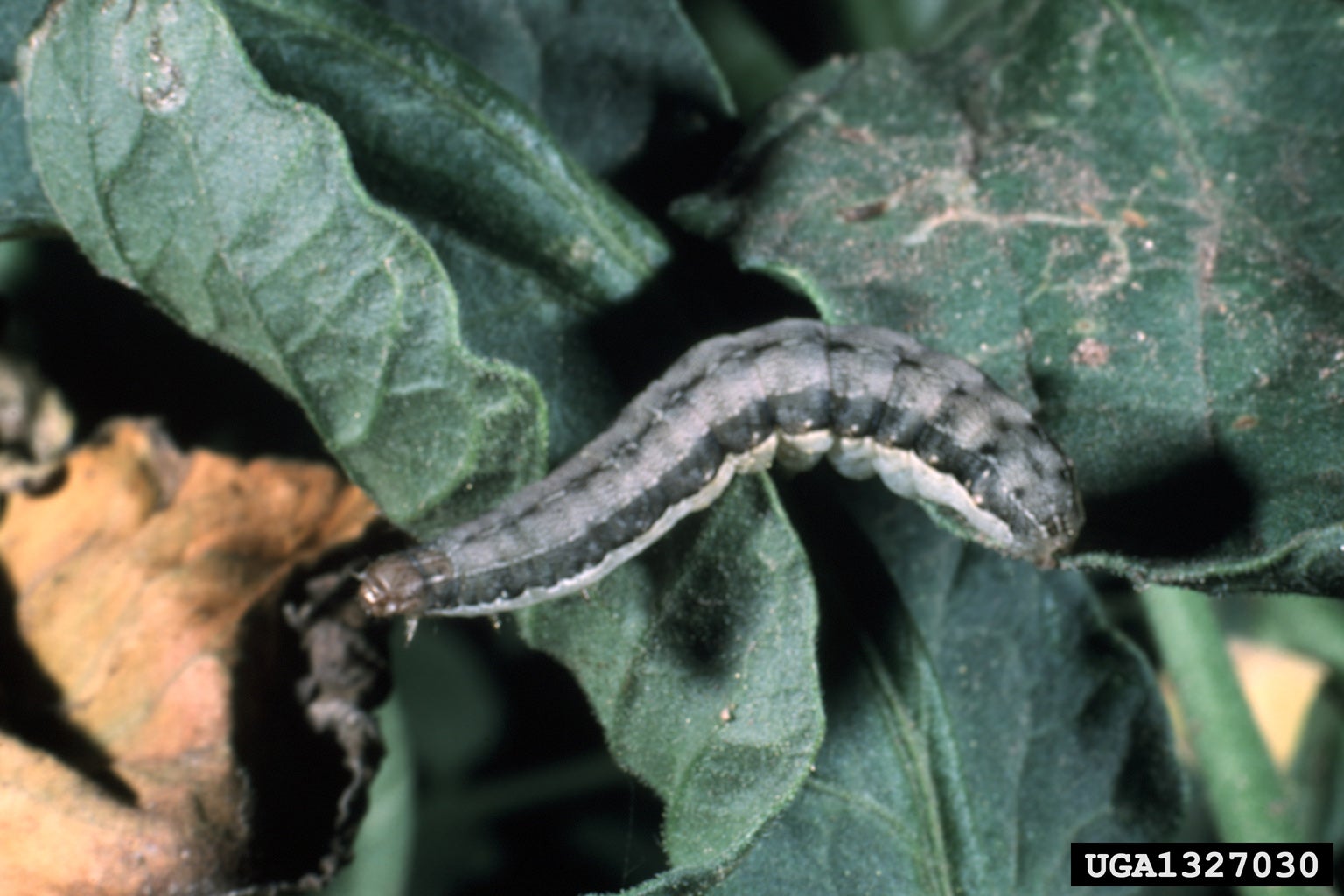Beet Armyworm Control: Information On Treating And Preventing Armyworms


Beet armyworms are green caterpillars that feed on a wide range of ornamental and vegetable plants. The young larvae feed in groups and usually don't have any unique markings to distinguish them from other caterpillars. However, older larvae develop a yellow stripe that runs from head to tail, making it easy to identify them. It is important to detect and treat a beet armyworm infestation early because these older caterpillars are resistant to most insecticides. Keep reading to learn more on identifying a beet armyworm infestation and preventing armyworms in the garden.
What are Beet Armyworms?
Beet armyworms (Spodoptera exigua) are caterpillars that feed on tender vegetable crops and a few ornamentals. They are normally found only in southern states and warm, coastal climates where the host plants survive through the winter. The adult form is a medium-sized moth with mottled gray and brown upper wings and white or pale gray lower wings. They lay fluffy masses of up to 80 eggs on the crowns of seedlings or on the tender leaves of older plants where the young caterpillars will have plenty of food when they hatch. The larvae slowly move to the ground to pupate on the soil.
Identifying Beet Armyworm Damage
Beet armyworms eat irregular holes in foliage, eventually skeletonizing the leaves. They can eat tender young transplants to the ground and defoliate older plants. They burrow into heading vegetables, such as lettuce and cabbage. Beet armyworms also leave gouges in tender fruit, especially tomatoes. Early detection aids in preventing armyworms. Watch for masses of eggs covered with fluff, small caterpillars feeding in groups, or single large caterpillars with a yellow stripe running down their sides.
Beet Armyworm Control
Beet armyworm control in the home garden begins with handpicking. Drop the caterpillars into a container of soapy water to kill them and then bag and discard the carcasses. Bacillus thuringiensis (Bt-azaiwi strain) and spinosad are natural insecticides that are effective against young armyworms and don't harm the environment. These caterpillars are resistant to most chemical insecticides that are available to the home gardener, but neem oil products are sometimes effective. The eggs, which are covered by a cottony or fibrous mass, are susceptible to treatment with petroleum oils. If you decide to try insecticides, carefully read and follow the label instructions. Pay particular attention to the length of time between treatment and harvest when treating beet armyworms on vegetable plants. Store all insecticides in their original container and keep out of the reach of children. Now that you know more about what beet armyworms are and armyworm control, you can better manage or even prevent their presence in the garden.
Sign up for the Gardening Know How newsletter today and receive a free copy of our e-book "How to Grow Delicious Tomatoes".

Jackie Carroll has written over 500 articles for Gardening Know How on a wide range of topics.